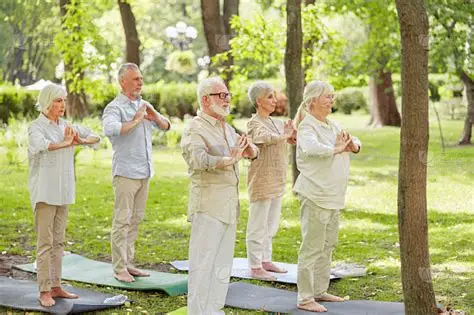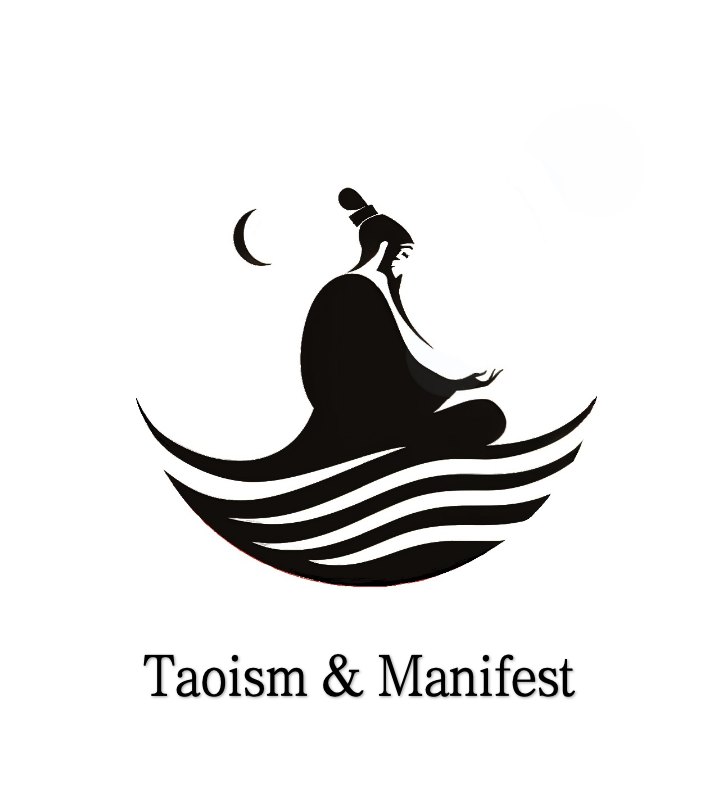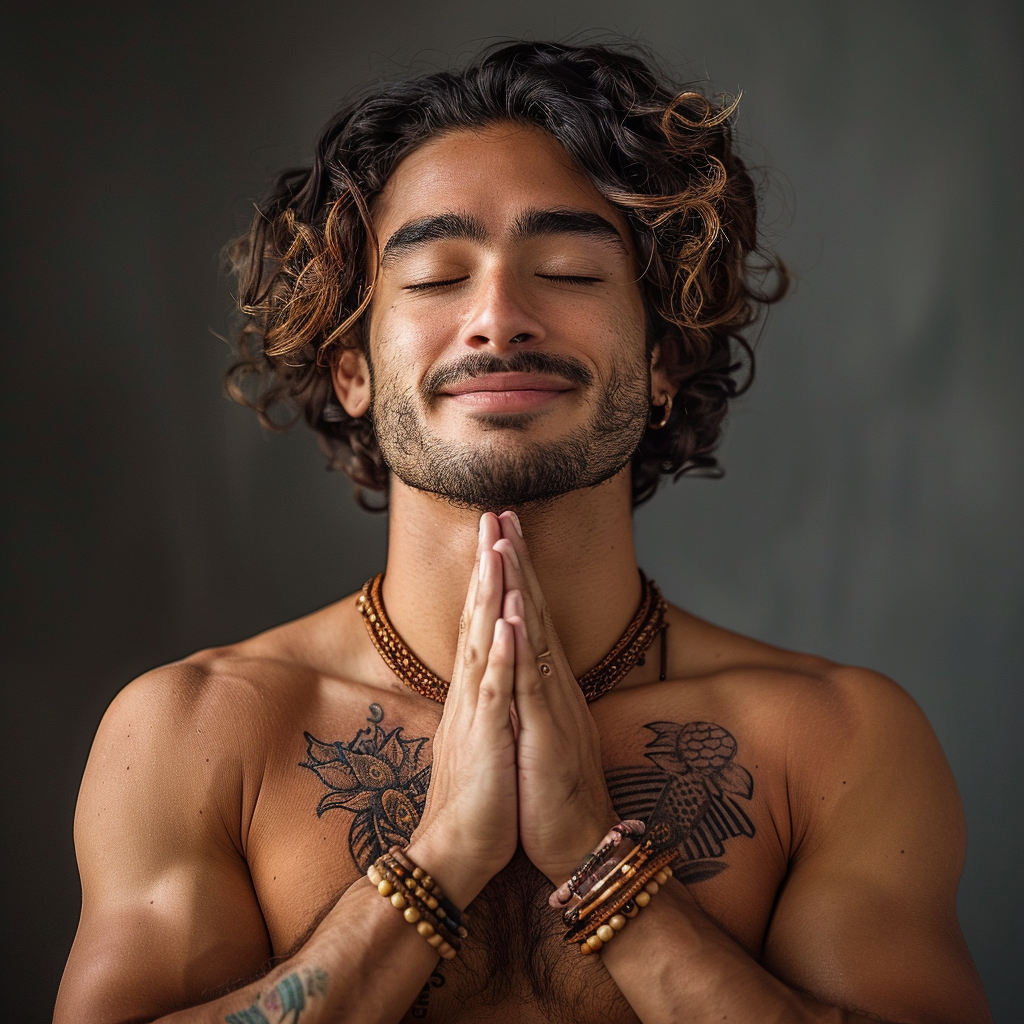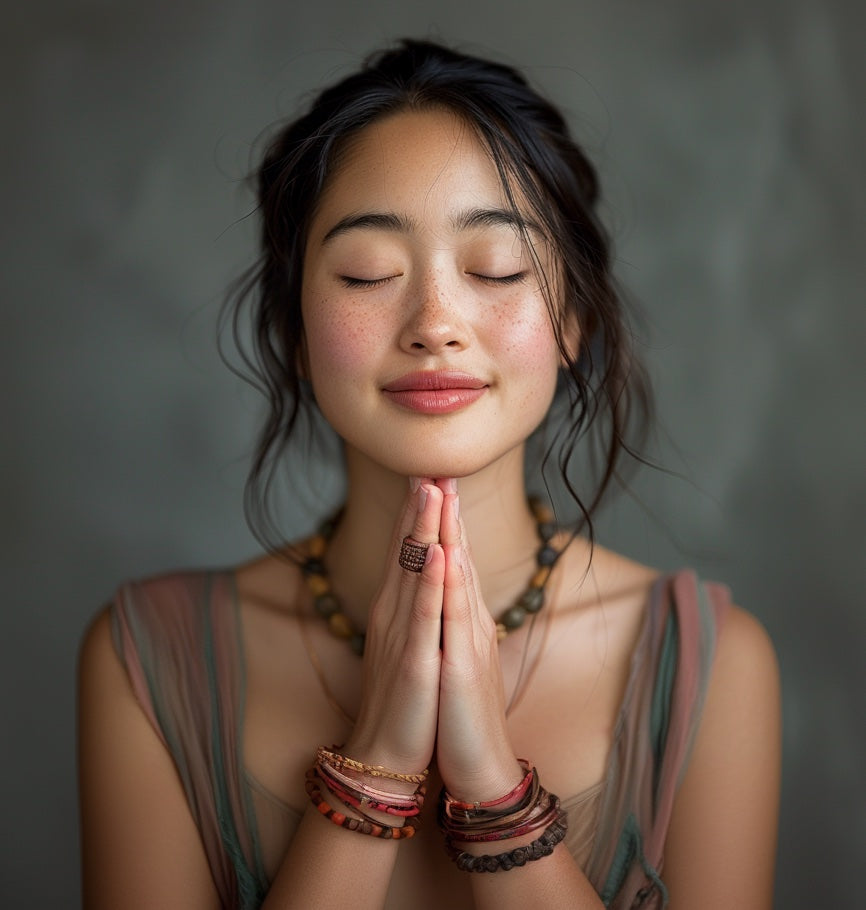
What Is Qigong Meditation and How Does It Work

Qigong meditation is an old Chinese practice that helps people stay healthy. It has been around for thousands of years. It was shaped by shamanic rituals, Taoism, Buddhism, and old medicine.
Historical Influence |
Description |
|---|---|
Shamanic Practices |
Early forms started in the Stone Age with calm sitting. |
Taoism |
Taoist ideas made Qigong part of medicine and daily life. |
Buddhism |
Buddhist meditation made inside skills stronger around 200 B.C. |
Bodhidharma |
He joined spiritual and fighting parts at Shao Lin Temple. |
Traditional Chinese Medicine |
Doctors used Qigong as an important way to treat people. |
People do Qigong meditation by moving slowly, breathing deeply, and paying attention. These steps help balance chi, or life energy, in the body. Qigong is different from other mind-body practices. It mixes movement, breathing, and meditation together. Millions of people now do Qigong meditation all over the world. More adults, women, and many groups are getting interested. Anyone can try Qigong and see its good effects.
Key Takeaways
Qigong meditation uses movement, breathing, and mindfulness. It helps people feel healthy and well.
Practicing Qigong can lower stress. It can help you feel happier. It can make your body healthier.
Anyone can do Qigong. You do not need to be young or fit. This means everyone can try it.
Doing Qigong often balances energy in your body. This helps you think clearly. It also helps you feel calm.
You can start Qigong easily. Find a quiet place. Think about what you want to do. Practice easy movements and deep breathing.
Qigong Meditation Explained

What Is Qigong Meditation
Qigong meditation is a mind-body exercise from old Chinese culture. People use it to help their health and feel better. Qigong mixes easy movements, careful breathing, and meditation. These parts work together to balance the body's energy called Qi. The practice comes from Traditional Chinese Medicine. It says health problems can happen if energy gets stuck. Qigong helps energy move smoothly, which keeps people healthy.
Some people think Qigong meditation is only for older people or that it is always slow and dull. But Qigong is good for anyone, no matter their age or fitness. You can do Qigong in many ways and at different speeds. Some think you need a special pose, but you can do it sitting, standing, or moving.
Qigong meditation helps people notice their bodies and minds more. It helps them relax and feel steady, like a tree with strong roots.
The main ideas of Qigong meditation are breath work, awareness, intention, relaxation, and rooting. These ideas help guide each session and help people pay attention to their body and mind.
Principle |
Description |
|---|---|
Breath Work |
Slow belly breathing helps control breath and brings calm and focus. |
Awareness |
Gentle movement helps people be mindful and handle thoughts and feelings. |
Intention |
Thinking on purpose helps people focus and connect mind and body. |
Relaxation |
Letting go of tension helps people be present and feel better. |
Rooting |
Feeling steady and safe, like a tree in the ground, brings calm and strength. |
Qigong meditation is special because it mixes movement, breathing, and meditation together. This mix makes it different from other mind-body exercises.
(For for information about Qi, check out Understanding the Vital Role of Qi in Taoist Life.)
How Qigong Meditation Works
Qigong meditation helps people control their energy, or Qi, by moving, breathing, and focusing. The practice uses slow, gentle moves and deep breaths to calm the mind and relax the body. Meditation helps people focus and notice their thoughts and feelings.
Studies show that Qigong meditation can help both body and mind. Doing it for a long time can lower depression, stress, and worry. It also helps the immune system and makes life better. Research found that Qigong lowers anxiety and stress in healthy people. One review showed Qigong made anxiety and stress drop more than in other groups.
Study Focus |
Sample Size |
Psychological Outcomes |
Key Findings |
|---|---|---|---|
Qigong on Anxiety and Depression |
1154 participants |
Less depression, better mood |
Big improvements in depression scores compared to other groups |
Qigong and Anxiety Reduction |
Many studies |
Lower anxiety |
Big drop in anxiety compared to exercise groups |
Physical Health Measures |
Many studies |
Better body symptoms |
Lower stress and pain levels |
-
Scientists found 886 studies about Qigong.
These include 47 reviews, 705 random trials, 116 controlled studies, 12 case series, and 6 case reports.
The most studied illnesses are diabetes, high blood pressure, and lung disease.
97% of studies show good results from Qigong.
Ba Duan Jin and Health Qigong are the most popular types.
Results often show better body movement, better life quality, less pain, and better mental health.
Qigong meditation helps health in many ways. It helps energy move in the body, which is important for staying healthy. The practice also teaches focus, relaxation, and breathing control. These skills help people handle stress and feelings.
Many people say Qigong meditation helps them feel calmer and more balanced. It gives them ways to deal with stress and feel better.
Qigong meditation does not need special tools or strict rules. People can do it anywhere and anytime. Doing it often helps keep energy moving and supports good health.
Main Components of Qigong
Movement
Qigong uses special movements to help energy move in the body. Each move has a reason and helps people feel better. People do Qigong by changing how they stand, stretching, and shifting their weight. These actions help the body feel balanced and relaxed. Qigong movements can be slow or fast, but they always help Qi flow. Some types are Five Animal Frolics and standing postures. These forms wake up different body parts and help energy move well.
Qigong Movement Type |
Contribution to Health and Energy Flow |
|---|---|
Five Animal Frolics |
Activates and harmonizes the Liver and Gallbladder meridians through stretching, lunging, and breathing techniques. |
Standing Postures (Zhan Zhuang) |
Regulates vital energy and fosters circulation through static poses, leading to increased energy accumulation. |
Acupressure Techniques |
Stimulates specific points to release blockages and improve Qi circulation, restoring harmony in the body's energy system. |
General Benefits |
Enhances physical function, cardiovascular health, respiratory health, bone density, and immune system response. |
Qigong movement helps balance, hand strength, and flexibility. It is good for the heart and makes bones stronger. Many people feel less pain and enjoy life more after doing Qigong.
Breathing
Breathing is very important in Qigong. People use deep, slow breaths to help Qi and calm their minds. Qigong breathwork is about moving energy, not just air. Each breath helps control Qi, lower stress, and make lungs work better. People learn to match their breath with their movements. This helps the body relax and heal. Qigong breathwork is different from other practices because it focuses on moving energy. This makes Qigong breath special.
Breathing in Qigong helps people stay healthy.
Deep breaths lower stress and help the lungs.
Qigong breathwork moves Qi, which is not like yoga or other meditation.
Qigong breathwork teaches people to pay attention to each breath and match it with movement. This helps them feel calm and steady.
(If you want to learn more tips on breathing, see Breathwork techniques for energy and relaxation.)
Meditation
Meditation in Qigong helps people focus and relax. People use awareness and intention to guide their minds. Qigong meditation helps people feel calm and think clearly. After a session, people often feel rested, happy, and clear. The meditation part of Qigong helps people feel more positive. Many people say they feel “in the zone” and very focused.
Findings |
Description |
|---|---|
Positive Affect |
Qigong practice shifts affect toward positive valence, enhancing emotional well-being. |
Flow Experience |
Practitioners reported flow-like experiences during Qigong sessions, indicating heightened mental clarity. |
Emotional State |
Participants described their post-session experiences as restful, relaxed, happy, balanced, and clear. |
Qigong meditation uses relaxing, chanting, and being aware. These things help people let go of stress and feel balanced. Qigong meditation is not just sitting still. It mixes breath, movement, and intention for a full practice.
-
The main parts of Qigong are:
Special movement
Body posture
Rhythmic breathing
Awareness
Chanting
Relaxation
Balance
Qigong brings together movement, breath, and meditation. Each part works with the others to help people feel healthy and balanced.
(To explore more about how to practice meditation, read Achieving inner peace through Taoist meditation.)
Types of Qigong
Qigong has different types. Each type has its own goal and way to practice. Some types help people get healthier. Others help people get stronger or grow spiritually. The main types are active Qigong, passive Qigong, and integrated Qigong. These groups make it easier to pick the right kind for you.
Type of Qigong |
Focus |
Energy Type |
|---|---|---|
Medical Qigong |
Healing skills, stopping sickness, and helping people get better |
Yin (passive) |
Spiritual Qigong |
Growing spiritual energy by being still and using your imagination |
Yin (passive) |
Martial Qigong |
Building strength, speed, and quick moves |
Yang (active) |
Active Qigong
Active Qigong is also called dong gong. It uses special moves and breathing. This type builds yang energy in the body. People do active Qigong to get stronger and more flexible. It also helps with balance. The moves help people notice their bodies more. Studies show active Qigong can lower stress. It may also help stop some long-term sickness.
Active Qigong has moving exercises.
The moves help people stay strong and bendy.
Many people feel more steady and less stressed after doing it.
People who do active Qigong say they feel full of energy and can focus better. They move with a reason, and their minds stay sharp.
Passive Qigong
Passive Qigong is about being calm and relaxed. People use slow breathing and think quietly. There is not much moving. This type helps the body rest and heal. It also helps people grow spiritually. Medical Qigong and spiritual Qigong are both passive. These types use stillness and imagination to move energy.
You can do passive Qigong sitting, lying down, or standing.
Breathing and thinking are very important.
People often feel calm and fresh after passive Qigong.
Many people like passive Qigong for stress and feeling better. Their minds get quiet, and their bodies feel safe.
Integrated Qigong
Integrated Qigong mixes moving and being still. It uses both active and passive ways. The body stays loose while the mind pays attention. Integrated Qigong helps people connect their body, mind, and spirit. It gives the good parts of both other types.
Active ways use moving exercises.
Passive ways use breathing and thinking.
Integrated Qigong gives a mix of both.
Integrated Qigong helps people live with care. They learn to move with focus and rest with purpose.
Qigong has many styles to try. Each type helps with health, strength, or spiritual growth. People can pick what fits them best and enjoy what Qigong gives.
Qigong vs. Tai Chi and Yoga
Similarities
Qigong, Tai Chi, and Yoga have a lot in common. They all help people connect their body and mind. Each one uses movement, breathing, and focus to help people stay healthy. These practices teach people to be mindful and aware of themselves. People use Qigong and Yoga to feel better and find balance in life.
Qigong and Yoga both teach people to be mindful. They help people notice what they think and feel.
Each practice uses special ways to control breathing. Qigong uses Tu Na breathing. Yoga uses Pranayama. Both show how breathing can help heal and move energy.
Movement is important in all three. Qigong forms and Yoga poses help build strength and make people more flexible. Tai Chi uses slow, smooth moves to help with balance.
Meditation and focus are big parts of these practices. Qigong and Yoga use different ways, but both help people feel calm and more aware.
Spiritual growth is a goal for each one. Yoga wants people to reach freedom. Qigong helps people grow spiritually and live longer.
Doing Qigong, Tai Chi, or Yoga can help people feel calm, strong, and more connected to themselves.
Differences
Qigong, Tai Chi, and Yoga are also different in many ways. Each one has its own style and purpose. The way people move, breathe, and set goals is not the same.
Practice |
Movement Style |
Intention Focus |
Health Outcomes |
|---|---|---|---|
Qigong |
Gentle, free-flowing movements |
Cultivating Qi and mindfulness |
Promotes energy flow and wellness |
Tai Chi |
Structured, slow, controlled forms |
Cultivating Qi and calmness |
Reduces stress, calms the mind |
Yoga |
Dynamic or static postures (asanas) |
Spiritual growth and intention |
Builds flexibility, strength, clarity |
Qigong uses gentle and flowing moves. Tai Chi follows set patterns with slow, careful steps. Yoga uses many poses. Some poses are still, and some are moving.
Qigong and Tai Chi both focus on Qi, or life energy. Yoga often has spiritual ideas and helps people grow inside.
The health benefits are not the same. Tai Chi helps lower stress and brings calm. Qigong helps people feel well and keeps energy moving. Yoga makes people stronger, more flexible, and helps them think clearly.
Qigong is special because it mixes movement, breathing, and meditation in a simple way. People can do Qigong anywhere, at any age, and at any skill level. This makes Qigong easy to start and keep doing every day.
How to Practice Qigong

Getting Started
To start Qigong, you need the right place and mindset. Many people like a quiet spot to help them focus. A calm room with no noise helps your mind rest. Some people do Qigong in the morning for energy. Others like it at night to relax before bed. You can do Qigong at any time of day.
Posture is very important in Qigong. People stand or sit with a straight back and relaxed shoulders. Feet should be flat on the floor. This helps you feel steady and open. It also helps Qi and chi move better. Wear loose clothes so you can move and breathe easily. If you have trouble with balance, you can sit down to stay safe.
Before you begin, try to clear your mind. Set a goal for your practice to help you focus. Take deep belly breaths to help your body relax. Think about the three main energy spots called dantian. This helps build up Qi and chi. These steps make a good start for every session.
Tip: A calm mind and relaxed body help Qi and chi move well during Qigong meditation.
Beginner Qigong Practice
Many new people want to know how to do Qigong safely. A simple routine is a good way to begin. Here are the basic steps:
Set an Intention: Clear your mind and pick what to focus on.
Breathe Deeply: Take slow belly breaths to calm yourself.
Focus on Dantian: Pay attention to your lower belly, chest, and head.
Begin Movement: Try easy arm circles or tap your body to wake up.
Coordinate Breath and Movement: Match each move with a breath in or out.
Stay Safe: If you have health problems, talk to a doctor first. Sitting down is safer if you have balance issues.
Qigong has moving and still exercises. Moving forms use arm swings, weight shifts, or tapping. These moves help energy flow in your body. Still forms use standing or sitting to build inner energy. Both types use breathing to help you relax.
Many beginners find Qigong hard at first. Some people want fast results and get impatient. Give your body time to learn new moves. Some think every move must be perfect. But relaxed moves can help you enjoy Qigong more. Some worry about finding time. Short sessions fit into busy days and still help.
How to Overcome It |
|
|---|---|
Impatience |
Give your body time to learn new moves. |
Perfectionism |
Relaxed moves can make practice better. |
Time Commitment |
Start with short sessions and add more time later. |
Note: Qigong does not need to be perfect. Every session is a chance to learn and get better.
Tips for Daily Practice
Doing Qigong often helps you get the most benefits. Experts say to pick a time each day to practice. Even short times help your health and mood. A quiet, tidy space helps you focus and relax. A comfy posture lets you breathe deeply and move easily.
You can add Qigong to your day by starting with short times. Later, you can make your sessions longer. Online videos and apps can show you how to do the moves. Classes in your area can help you learn and meet others.
Here are some ways to keep practicing:
Practice at the same time every day.
Be patient and do not judge your progress. Each session helps you learn.
Pick a comfy posture for deep breathing and easy movement.
Stay in the moment. If you get distracted, gently focus on your breath again.
Use online help or join a group for support.
Remember: Qigong meditation is a journey. Each time you practice, you learn more about Qi, and how your body and mind connect.
Learning Qigong gives you ways to handle stress, feel better, and find balance. With patience and practice, anyone can enjoy the benefits of this old art.
Qigong meditation uses movement, breathing, and mindfulness to help people stay healthy. It gives many good effects:
Helps your body, mind, and thinking skills
Eases pain and helps with long-term sickness
Makes sleep better and helps you feel less tired
Helps you control feelings and get along with others
Builds confidence and helps friendships
Keeps your heart and immune system strong
Lowers stress and helps you relax
The table below shows how each part helps your health:
Component |
Health Benefits |
|---|---|
Movement |
Helps balance, flexibility, and body strength |
Breathing |
Makes your immune system stronger and lowers stress |
Meditation |
Helps you relax and keeps your mind healthy |
You can try guided meditations or join a local class to feel these benefits. Qigong is known in China and the US for helping people feel better.
FAQ
What is the main purpose of Qigong meditation?
Qigong meditation helps people balance energy in their bodies. It guides energy to move in a natural way. People use movement, breathing, and focus to help energy flow. This practice helps the mind and body work together. It makes people feel better and healthier.
What does energy mean in Qigong meditation?
Energy in Qigong meditation is the life force in the body. People think this energy keeps them healthy and strong. When energy moves well, people feel good. If energy gets stuck, it can cause problems. Qigong meditation helps energy move smoothly.
What is a Qigong relaxation exercise?
A Qigong relaxation exercise uses gentle moves and slow breathing. It helps calm the mind and lets energy flow easily. People feel peaceful after doing these exercises. The goal is to relax the body and help energy move.
What makes Qigong meditation different from other practices?
Qigong meditation mixes movement, breathing, and focus to guide energy. It uses easy steps to help energy flow. People do not need special equipment. Anyone can try Qigong meditation, no matter their age. The focus on energy makes it special.
What are the benefits of daily Qigong meditation?
Daily Qigong meditation helps energy move better in the body. People feel less stress and more calm. It helps the immune system and supports healing. Doing it often builds strong energy. People notice better mood, sleep, and focus.
See Also
Understanding the Vital Role of Qi in Taoist Life





